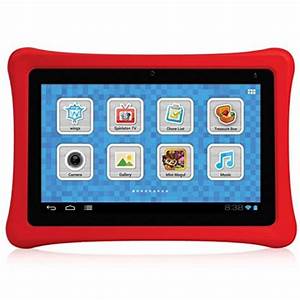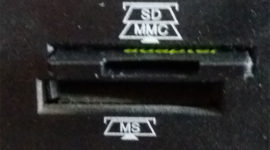Tablet Comparison: nabi 2S vs nabi Jr
 The nabi 2s and the nabi Jr. are both tablets designed for children from Fuhu. The 2S is more expensive than the Jr., so what are the differences between the two?
The nabi 2s and the nabi Jr. are both tablets designed for children from Fuhu. The 2S is more expensive than the Jr., so what are the differences between the two?
The 2S is a 7″ tablet whilst the Jr. is only a 5″. Both have multi-touch capacitive displays, but that of the Jr. only has a resolution of 800×480 pixels whilst the 2S has a substantially higher resolution of 1280×800 pixels resolution. Given the difference in screen size, the Jr. is, not surprisingly, smaller, thinner and lighter than the 2S. The rechargeable battery of the 2S is also more powerful, but a more powerful tablet requires a more powerful battery.
The 2S features a quad-core processor, with a fifth core battery saver, whilst the Jr. only has a dual-core, making the 2S faster. The 2S runs Android 4.2 Jelly Bean whilst the Jr. runs the older 4.0.4 Ice Cream Sandwich.
The in-built RAM of the Jr. is only half of the 2S’s 1 megabyte, at 512 kilobytes.
Each has a 2 megapixel camera, but the 2S is front facing, whilst the Jr.’s camera rotates through 180 degrees.
The storage on the nabi Jr. is 4 gigabytes (GB) compared to 16GB on the nabi 2S. Each can also be expanded by memory cards up to 32GB in size. The 2S therefore has more storage.
Each has Bluetooth and WiFi; the 2S has Bluetooth 4.0 compared to the 3.0 of the Jr. and also has dual-band WiFi.
Both tablets have nabi Connectors, microSD card slots, 3.5mm headphone jacks, built-in microphones and integral volume controls and speakers. The nabi Jr. also has a stylus holder built into the case. Each also has a drop-safe protective bumper.
The nabi 2S is a larger, more powerful tablet than the nabi Jr., making it more useful for older children, although this also makes it more expensive. The Jr. is most suited for those wanting a cheaper tablet, for whatever reason, although the saving in initial expenditure may well not be worth it in the long run.
>> Fire 7 Kids Edition
>> Fire 8 Kids Edition
>> Dragon Touch K8 Kids
>> Tagital T7K
>> LeapFrog Epic Academy Edition
>> Samsung Galaxy Tab E Lite Kid
>> Kids BTC UK 7" Quad Core Tablet PC

